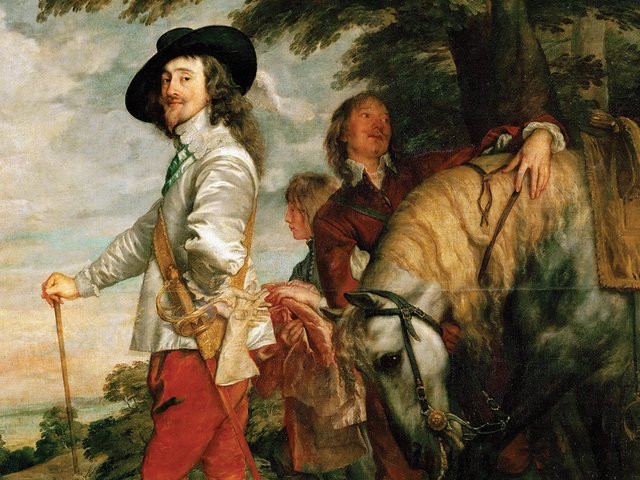Artists from the Netherlands—the predecessors and contemporaries of Van Dyck—were the finest portrait painters in 17th-century England. Karen Hearn, a former curator at Tate Britain, is an expert on their work and has brought much new information to light, particularly in her ground-breaking exhibition Dynasties: Painting in Tudor and Jacobean England 1530-1630 (Tate Britain, 1995).
The focus of Hearn’s latest scholarship is the life and work of the portraitist Cornelius Johnson (1593-1661), known in the Netherlands as Cornelis Jonson van Ceulen. She has produced a short, readable book—to accompany a one-room display of his portraits last year at the National Portrait Gallery, London—that provides a chronological assessment of the artist’s career.
Characterised as “Charles I’s other portrait painter”, Johnson was appointed “his Majesty’s servant in ye quality of Picture Drawer” in 1632. Born in Britain to Flemish parents, he was the first British painter regularly to sign his work. He may have trained in the studio of Jan Anthonisz van Ravesteyn in The Hague or Michiel Jansz van Mierevelt in Delft, and his technique and sensitivity make him (almost) a worthy rival to his contemporary Van Dyck. Unfortunately for Johnson, his reputation in England was eclipsed by Van Dyck’s success. In 1643, following the outbreak of civil war, he moved to the northern Netherlands, where he continued to practise portraiture, dying 20 years later in Utrecht.
Cornelius Johnson shows how the artist was appreciated for his “neat finishing and smooth painting” (according to the British writer Bainbrigg Buckeridge in 1706). He frequently portrayed sitters in a trompe l’oeil oval painted to imitate a stone niche, notably Tate Britain’s Susanna Temple, Later Lady Lister (1620) and the Unknown Lady (1619) at the Yale Center for British Art. Such a format was an intelligent strategy for an artist entering a new market, as Hearn points out, because it was quick to paint and inexpensive to commission. Johnson’s meticulous technique is exemplified in his careful depiction of jewellery, probably influenced by his brother-in-law Nicasius Russel, who was a goldsmith.
Johnson’s first full-length portraits are signed and dated 1625. He was popular with clients such as Thomas, 1st Baron Coventry (1578-1640), Lord Keeper of the Great Seal, and Sir Robert Heath, Lord Chief Justice (1575-1649), becoming painter “of choice for individuals who had risen from the ‘middling sort’” and who, according to Hearn, “wished to mark their appointment to…office by commissioning a portrait”. Despite his royal preferment, Johnson received few commissions from the king, although his three small full-length portraits of the king’s eldest children, painted in 1639 (now at the National Portrait Gallery in London), must have been ordered by Charles. His popular portrait miniatures were produced using an unusual technique of oil on metal.
Hearn attributes Johnson’s success to his networking skills (particularly within the Dutch community at Austin Friars in London), his technical ability, modest prices and pragmatic response to market demand, together with his willingness to collaborate and ability to reinvent his national identity. He may not have had the virtuosic skills of Van Dyck but Johnson’s work was widely enough admired for him to die a wealthy man.
• Susan Jenkins is a curator and researcher who has written extensively on 17th- and 18th-century fine and decorative arts
Cornelius Johnson
Karen Hearn
Paul Holberton Publishing, 72pp, £14.95 (pb)


